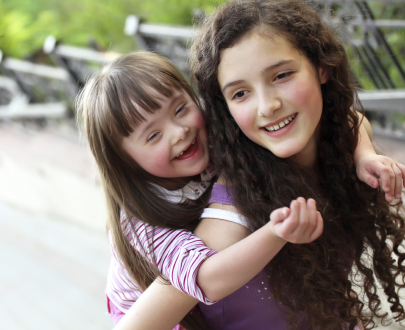
Helping others is good for society, for social and emotional development and health! In a randomized control study[1] of high school students, adolescents who volunteered with young children 1 hour a week over a 10 week period showed higher levels of empathy, altruism (helping behaviours outside the volunteer hour) and even a lowered risk of heart disease.
Volunteering is one effective way to foster empathy and kindness in children and youth . Dr. Kimberly Schonert-Reichl[2], investigator in this study and internationally recognized developmental psychologist, offers the following list of practical actions that science has shown builds the skills and strengths that help children to be kind.
10 Things Parents and Caregivers Can Do to Promote Emotional Understanding and Kindness
-
Ask your child how he or she is feeling. When you ask about your child’s feelings, you are communicating that you care and value his or her emotions.
-
Talk about your child’s feelings and the feelings of others that are communicated through facial and body expression. When your child is sad or happy, you might say “I can tell how you are feeling because your face and body are telling me.” When a child’s friend or sibling is showing a feeling (such as sad), point out to your child that child’s feelings that are expressed through facial and body expressions, and discuss the experiences and situations that lead to the various types of emotions.
-
Use a wide variety of emotion words in your interactions with young children. When you are talking to your young child, use a number of different emotion words to talk about situations or events. Point out the emotions of others and use opportunities to expand your child’s emotional vocabulary, including words such as guilt, satisfied, pride, anxiety, fear, and excitement.
-
Label emotions and describe the situations that lead to those emotions through children’s literature. In early childhood, children are just beginning to develop their emotional literacy skills, which include an emotional vocabulary. Use any opportunity to point out the emotions of others and give those emotions names. Children’s books provide a wonderful opportunity for this.
-
Engage young children in activities that help you and others. Like all of us, children want to help and contribute. Provide many opportunities for your child to help you (in household chores or other activities). Developing this early in development will help children see this as a normal part of life.
-
Demonstrate caring and kindness through your own actions. As we often know, children often can learn more from our actions than our words. Acknowledge your mistakes with your children (e.g., say “I am sorry”). Show forgiveness to others and your child.
-
Talk about kindness and the good feelings that arise when doing kind things for others. When your child is helping, tell him or her how good it feels. Communicate your own pride and happiness to your child for his or her helpful behavior.
-
Promote gratitude. Encourage your child to give thanks. Model gratitude and point out to your child all that he or she has to be thankful for in his or her life.
-
Use a positive and restorative approach to discipline and model empathy when your child has done something wrong. When your child has done something wrong, use this as an opportunity for discussion, using a child‐centered approach in which you take your child’s perspective – that is, put yourself in his or her shoes and view the world from that point of view. Engage your child in problem solving – and discuss how he or she could do something different in the future that would end in a more positive way, you might say “What could we do if this happens again, what would be a way to solve this problem?” Also, help your child develop a restorative approach – that is, to find ways to repair harm when harm has been done. For example, if he or she has harmed another child intentionally or by accident, ask him or her what they could do to help the other child feel better.
-
Help your child develop a “caring” identity. When your child is engaged activities that are caring and kind, you should recognize that behavior as part his or her identity – “you are such a kind and caring child because you did [the behavior that demonstrated kindness and caring.]”
This study explores whether regular volunteering can reduce cardiovascular risk factors in adolescents. Subjects who volunteered 1 hour per week for 10 weeks had a statistically significant decrease in cardiovasuclar risk. In addition, those subjects who experienced the biggest increase in empathy and altrusitic behaviours and the biggest decrease in negative mood also showed the greatest improvement in cardiovascular risk.
Kimberly Schonert-Reichl, Ph.D., is an author, award-winning teacher, researcher and professor. She is currently the NoVo Foundation Endowed Chair in Social and Emotional Learning, Professor - Department of Psychology, University of Illinois at Chicago. For more than 20 years, Kim’s research has focused on the social and emotional learning (SEL) and development of children and adolescents.
Her work places particular emphasis on identifying the processes and mechanisms that foster children’s positive human qualities such as empathy, altruism, resilience, compassion and kindness. Kim is an expert in the science and practical ways in which schools, families and communities can promote such positive traits in young people.